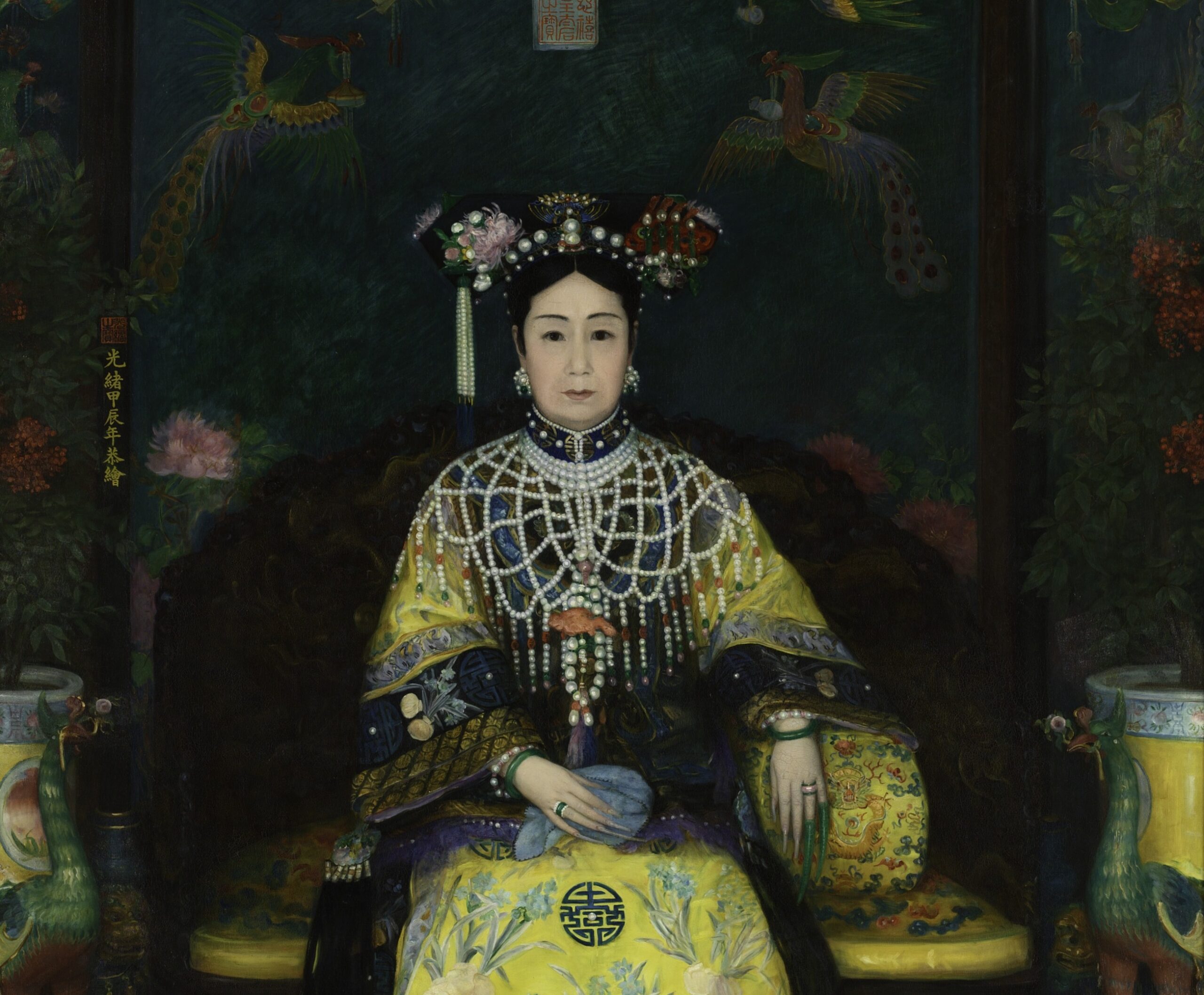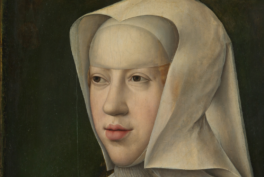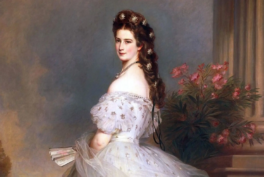Summary
- As the last empress of China, Empress Dowager Cixi sought to improve the country’s image through diplomacy. Her strategy was to devise a imperial image of herself and use it to display the strength of the nation she ruled.
- Lady-in-waiting Yu Der Ling and advisor Sarah Pike Conger introduced Cixi to American painter Katharine Carl, who would be the first fine artist to work with the Empress in history.
- Carl created four portraits at the end of an intercultural collaboration facilitated by the two women. They drew attention to the artistic and political environments within and outside China amid a changing dynamic between the Qing dynasty and the West.
- One of these works was presented at the 1904 St. Louis World’s Fair. The positive reception of it contributed artistically to promote China’s image in the international political scene.
Empress Dowager Cixi
The Empress Dowager Cixi (1835–1908) was the longest-reigning regent of China. Her reign overlapped with some of the most turbulent times in Chinese history. She witnessed the First and Second Opium Wars, the Taiping Rebellion, followed by the First Sino-Japanese War, the Boxer Rebellion, the Russian Invasion of parts of China, and the Russo-Japanese War, which likewise took place in parts of China. Tragedy also brimmed her personal life. She lost her husband, the Xianfeng emperor, in 1861. Then, in 1875, illness took away both her only son, the Tongzhi emperor, and his wife, Empress Xiaozheyi. The young emperor and empress consort died young. They were respectively 18 and 20. Despite these incidents, Cixi retained a period of relative peace and prosperity, perpetuating her personal power throughout. All the while, she let the forces modernizing China and forging international alliances seep in. These efforts collaterally saved China from being obliterated on the international stage.1
Cixi as an International Woman
One way for Cixi to promote her image internationally was by opening the gates of the Forbidden City to Western guests. This decision changed the preconceived image of the imperial city of the Ming and Qing dynasties. Commonly known as the Forbidden City, the region had been deemed exclusive for the royal family, appointed ministers, and certain trained staff. It was also an attempt to bust the unwelcoming image of the imperial district as a place where local civilians and international personnel stayed out, with the latter often treated with extra caution.
In the early 1900s, Cixi started inviting foreign officials based in Beijing and their wives to the imperial palace. She made an exception, but more so an effort to open negotiations with the West for herself and for China. However, based on how gender differences were spatialized in the Qing dynasty, she welcomed these officials in the palace but their wives in her living quarters. During these events, Cixi curated every detail of the spaces so that her guests could get a sense of herself and her country from the interior configurations. For instance, she handpicked her clothes and arranged the furniture for each visit. She also selected the members of the Qing court to appear in these events and chose carefully what words and translators were to be used.2
But besides the Empress herself, three women played crucial roles throughout.
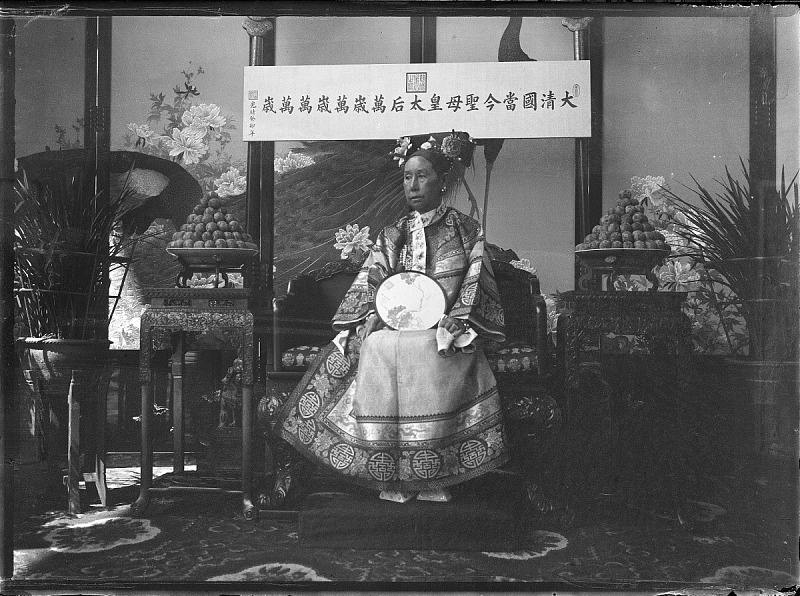
Yu Xunling, The Empress Dowager Cixi at Summer Palace in Beijing, China, 1904, Smithsonian Institution, Washington, DC, USA.
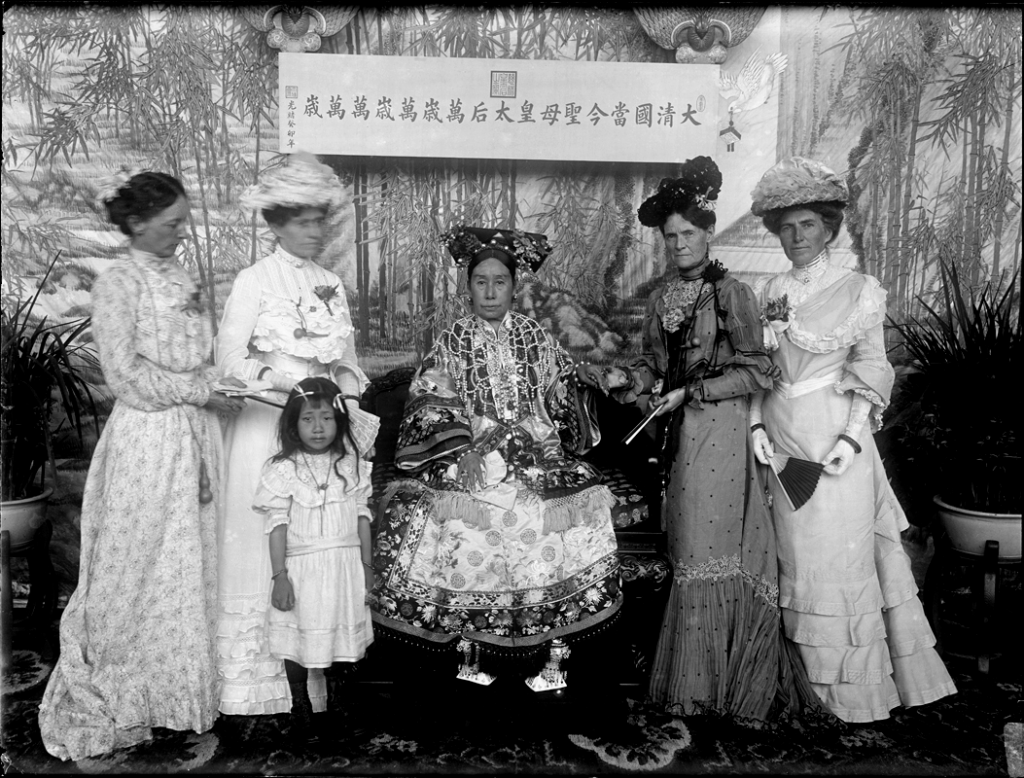
Yu Xunling, The Empress Dowager Cixi with American envoys’ wives in Leshoutang, Summer Palace, Beijing, China, 1904, Smithsonian Institution, Washington, DC, USA.
Yu Der Ling
Yu Der Ling (裕德龄; 1881–1944) was a Hanjun bannerwoman and daughter of Yu Keng. According to her memoir, Yu Der Ling had a half-American mother and grew up with elaborate training in Qing court customs and Chinese classical literature. She then traveled with her father to Japan and spent most of her early years in France. Upon her return to China, she became an asset to the Empress’ court, translating English, French, and Japanese during the visits and acting as an intermediary between the cultures of East and West.
While her father had connections to the Qing court and the Empress herself, Yu Der Ling impressed everyone after her stay of just a little over two years. She quickly became very close to Cixi as well. The Empress respected Yu Der Ling for her multilingual skills and liked her considerate personality. The numerous gifts and clothes Yu Der Ling received, along with her “Princess“ title given by the Empress, show how she established herself at the court.3
In addition, photographs confirm the emotional bond between Yu Der Ling and Cixi. One of them shows Cixi on her right and an eunuch in the back. Yu Der Ling was holding Cixi’s arm in a daughterly manner. Such a level of physical contact with people as prestigious as Cixi is uncommon, if not forbidden, based on the Qing court’s norms and the disparity between their social status.4 On the other hand, it might signal that Yu Der Ling had been treated as part of the Qing imperial family.
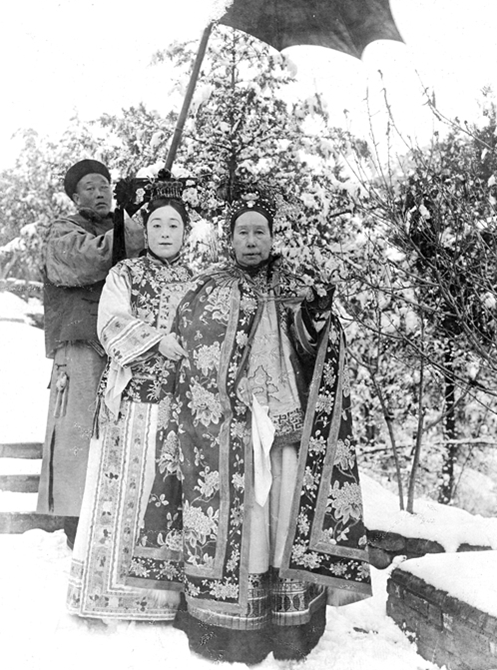
Yu Xunling, The Empress Dowager Cixi accompanied by attendants, 1904, Smithsonian Institution, Washington, DC, USA.
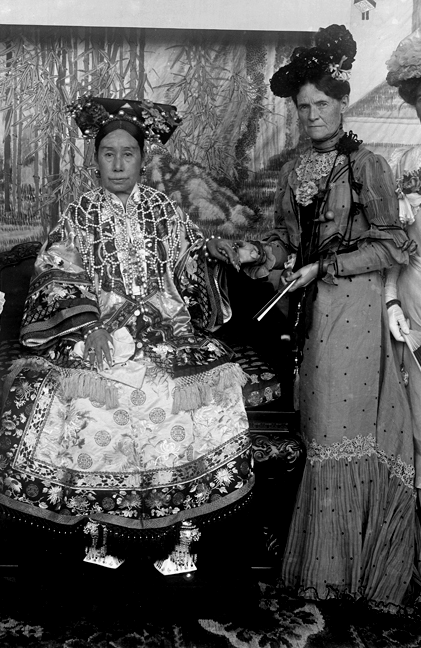
Yu Xunling, The Empress Dowager Cixi with American envoys’ wives in Leshoutang, Beijing, China, 1904, Smithsonian Institution, Washington, DC, USA. Detail.
Sarah Pike Conger
Another woman facilitating the transnational conversation was Sarah Pike Conger (1843–1932), the wife of the American diplomat Edwin H. Conger. The couple resided in China between 1898 and 1905. Sarah Pike Conger and Cixi had been in diplomatic conversation with each other. But their ties were strengthened after the Congers supported Cixi on various public occasions and remained in great proximity when the Empress needed to reestablish international relations.
Sarah Pike Conger was photographed holding hands with the Empress in the famous Summer Palace images with the wives of foreign envoys. Although “the right-hand person” has become a common expression today, this arrangement used to be against the mentioned taboo of touch at the Qing court. What is more, a portrayal of two figures holding hands was, in the Chinese customs of the time, only accepted between spouses or very close friends.6 It was indeed as a friend that Sarah Pike Conger could talk Cixi into sitting for Western-style portraits. She claimed she intended to restore the Qing dynasty’s international image, especially that of the imperial family, which was demonized after the Boxer Rebellion.5
Initially, Cixi was shocked by the suggestion of having her portrait commissioned when she was still alive. From the Ming dynasty to early modern China through the late Qing dynasty, portraits tend to refer to the ancestor portraits for the deceased that were presented to families at funerals. Furthermore, good portraiture in Qing China was less about individual physical features than the subject’s self as in personhood. But eventually, Yu Der Ling and Sarah Pike Conger would convince Cixi to embark on this project.
Katharine Carl
Katharine Augusta Carl (1865–1938) was a New Orleans, Louisiana, native. Carl started her art education at the Tennessee State Female College but went to Paris after 1882 to further her studies and specialize in portrait painting. There, she met Yu Der Ling. The two became close acquaintances and collaborated on several portraits. Carl’s style resembles late 19th-century classical American portraiture with subtle influences of French academism. She was credited as the artist behind portraits of political figures such as Prince El Hadj in Algiers, Paul S. Reinsch, and Sir Richard Dame. Her most well-known works, though, are the portraits of the Empress Dowager Cixi, as part of a commission initiated by Sarah Pike Conger. The latter contacted Carl through her brother, Francis A. Carl, who was then an employee at the Imperial Chinese Maritime Customs Service.
Apart from being involved in the world of politics, Carl had an interest in non-Western (albeit fictitious) elements. Her earlier works such as An Oriental Beauty depict such a vision of the East, a problematic ideology since the coinage of Orientalism. Form-wise, Carl played with hue and color variation in the work by including more than 30 shades of white. The painting also established the artist as someone adept in Western shading techniques and perspective, which goes against a myth held by art critics that Carl lacked these skills when painting Cixi and, thus, hinted that the latter work likely resulted from a deliberate choice.
Once the commission became official, Carl was invited to stay at the Summer Palace during the painting process. She ended up with four paintings of the Empress in the span of eleven months, during which her whereabouts were supposed to be under close surveillance of Cixi. Even though this indicated that the artist could only look at the Forbidden City from a distance and probably as a carefully curated image, Carl spent most of her time with Yu Der Ling. Both of them wrote in retrospect that it was a pleasant experience leading to a long-lasting friendship.7
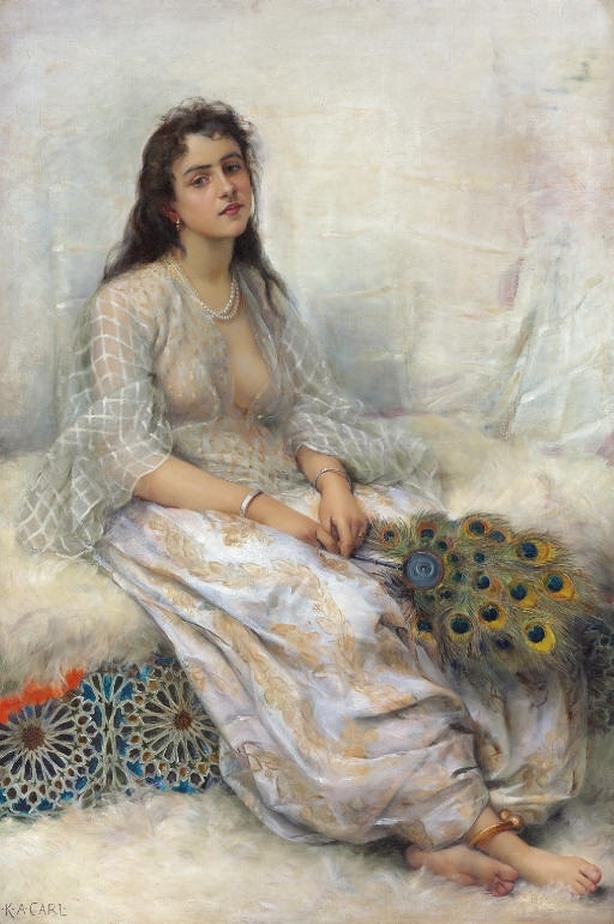
Katharine Carl, An Oriental Beauty, private collection.
Painting the Empress
From Enthusiasm to Control
Cixi initially showed great interest in the painting process. Unaccustomed to the Western way of “portray sitting,” she was curious about whatever Carl did and observed all along. But with multiple painting sessions that differed greatly from Chinese approach, where painters were to paint after looking at the subject for only one session, the Empress soon started to voice how she found it extensively confrontational to be stared at for such a long time. She then refused to pose.8
Yu Der Ling and her younger sister, Yu Roung Ling, posed for the remaining sessions on her behalf. They were respectively twenty-three and twenty-two, so using them as references made the sixty-nine-year-old Empress look significantly younger in the end. But it pleased Cixi, who remained in total control over every aspect to be featured, including the symbolisms. To foreground her position as the Empress Dowager, she insisted on including the phoenix and peacock in the imagery. Carl also made sure to include a lot of pearls, bright splashes of yellow silk, and jade nail protectors, upon Cixi’s request, to declare her royal lineage through opulence. The direct involvement Cixi had behind the portraits defined their role as political images.
Four Portraits
Out of the four portraits of Cixi, one is a close-up view of her in a formal court dress. It was meant to be displayed in the entrance hall where the Empress received international guests and is now part of the permanent exhibition at Beijing’s Palace Museum. The second painting is now lost. Designated for the Empress’ chamber, it is said the Empress appears in an informal dress and setting that Carl rendered with more artistic freedom. The third portrait was a draft to be kept in the palace for official record keeping. The draft gave rise to the final portrait. As planned by Sarah Pike Conger, this was the “main portrait” and the most formal one of the series. With Cixi in her full court attire and a background suggesting the imperial court, the work should undertake the task of mending Qing China’s international image at the St. Louis World’s Fair.9
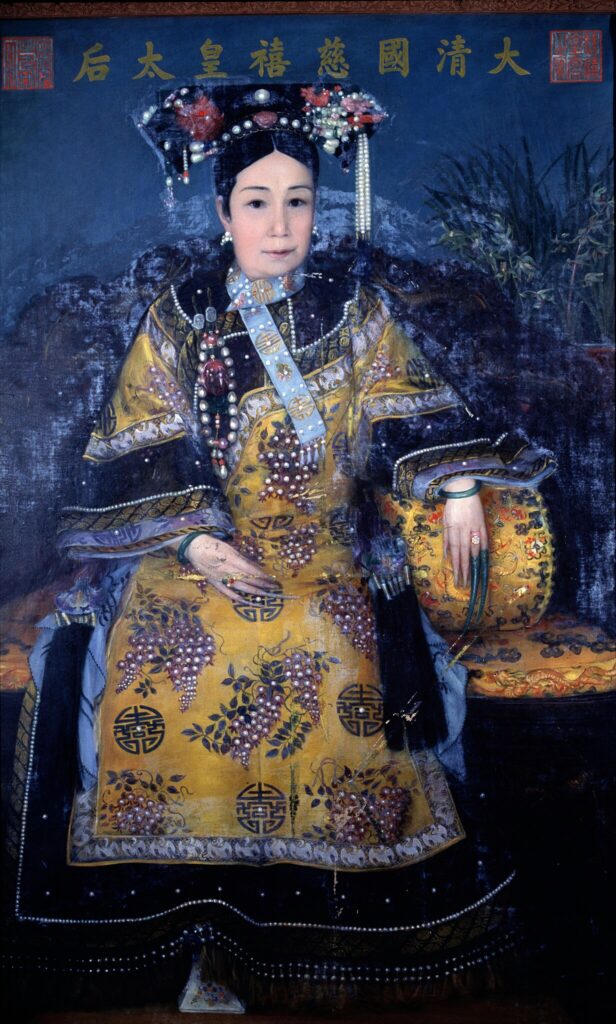
Katharine Carl, The Empress Dowager Cixi of China, 1904, Palace Museum, Beijing, China.
A Clash of Cultures
The portraits signified a collaboration between the Empress and the artist. On the other hand, they encapsulated a journey exposing the conflicts across customs and traditions and seeking a middle ground. Minimizing the presence of West-centric photographic perspective or shading was part of it. The Empress, sensing that both techniques were largely absent from Chinese art, chose to make the portraits more relevant to a Chinese artistic approach and thus resulted in a less realistic rendition.
Another cultural issue arose when Carl signed the portraits with her own name, like most American and European artists. This was an act Chinese portraitists refrained from and hence caused prolonged discussions between the Empress and Yu Der Ling, who spoke for Carl. Due to the difference in the role of an artist in the West and Qing China, there was a misunderstanding regarding the compensation for the portrait. The Empress was strictly opposed to rewarding Carl with money for the work and instead wanted to grant her status and royal recognition in the Chinese court. For Chinese artists, this would have been highly preferable as it would secure life-long employment beyond the imperial district. The disagreements were resolved, with Yu Der Ling convincing the Empress to both let Carl keep her signature on the portraits, as well as have her handsomely rewarded with money instead of status.10

Katharine Carl, The Empress Dowager Cixi of China, 1903, Smithsonian American Art Museum, Washington, DC, USA.
The Portrait On-the-Move
Qing China and the American Section
On May 4, 1904, the portrait traveled from Beijing to St. Louis for the exposition. The work wound up in the American section instead of the Chinese one. It was because it came from the American artist Katharine Carl, but also for a more interesting reason: Cixi herself ordered the portrait to appear there, as it was the American audience and their perception of herself and Qing China that she wanted to impact. Her endeavor seemed to pay off, as the portrait was said to “[attract] throngs of visitors at all times.” That was an estimate of 20 million by the end of the event.11
Significance and Impact
The portrait’s subject matter and the Chinese entourage sent with it were portrayed in a positive light. None of the international newspapers covering the St. Louis World’s Fair associated the exhibit with the Boxer Rebellion. Some international newspapers saw the efforts of Cixi, the first Chinese ruler to participate in a global exhibition, as remarkable. Negative comments were predominantly from art critics toward Katharine Carl. They problematized the artist’s command of perspective and shading, as well as the portrait’s scale–contrary to the Empress’ expectations, it turned out to be too large by American standards. They also attacked what they perceived as an over-embellishment in details. These critics, negligent of the cultural contexts and political dynamic, simply dismissed Carl as a poor artist.12
Conclusion
For the press, the portrait counteracted the harm the Boxer Rebellion did to the Qing court with maneuvers from Cixi. Beyond the St. Louis World’s Fair, most will agree that the Empress stepped out of her comfort zone. She resorted to Western painting as a concept and a means and used the medium to her advantage. Her political power was maintained, and the international image of the Qing government was improved, according to her. The portrait also marked the start and end of an experience for Katharine Carl, who had the chance to consider the limits of her artistic expression in relation to Chinese culture and politics as she saw it in the vicinity of her residence. Thus, both the artist and the empire shaped these artworks, which, in turn, represented a challenging yet effective artistic, political, and intercultural collaboration.13
